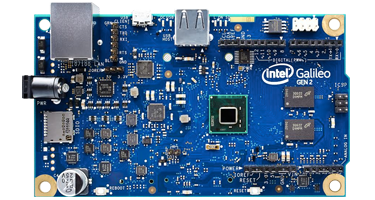5 ways for avoid the IOT Integration Nightmare
These five key IOT integration considerations are drawn from hard lessons learned by the earliest adaptors of IOT integration. They are a great foundation on which you can start your own IOT Integration journey:

Use a backend data acquisition system
If you want a temperature sensor for your IT room or a movement tracking system for customers browsing in your shop, you need to know where the data is going to be stored. Cloud based solutions currently on offer are Microsoft’s Azure IOT Hub which allows users to spin a free 30 day evaluation copy to integrate their devices. All architecture requirements are provided - from edge devices to dashboard reports. Another supplier is IBM’s Watson IoT Platform allows users to build IoT applications and analyse data from any source. Something to bear in mind when picking a provider is that you should choose a solution that will be around for the life cycle of your IOT device.Try to standardise your approach to the vendors approach
IOT involves new technology, which is mostly open source. That’s brand new tech and no matter what the vendor says, based on time in the market alone, it is likely not to be what “enterprise grade” typically means. You need to ensure it aligns as best with your current core infrastructure skills. If you are a Microsoft house and using .Net apps, then their Azure IOT hub is a natural choice. Intel also have an open source based IoT platform reference model and products solution which uses best of breed open source tools to provide an end to end IoT solution from their devices through to data analytics and dashboards. If you choose some open source technology based on Node.Js and JSON for example and don’t have the matching skill set internally, you should be cautious if you want to bring your organisation on this journey and get your return on the investment. In essence try to standardise your approach to the vendors approach.Consider all security risks
Are you sitting in a cool room? Air con keeping you nice and comfortable? Today devices are often hooked into central monitoring systems to save on costs and if they are, they may well share data with the internet through your local network. That’s how the biggest mass data breach to date was carried out - hackers tapped into an air con unit and accessed the corporate LAN. From there they accessed the EPOS system where they stole credit card details for months on end. If you don’t know the IOT tech you are putting in place - what data it transfers, to whom and what systems, you need to completely lock this down right from the start - as IOT device weaknesses and data protection breaches are increasingly being discovered during IT security audits.What data should I collect and how often?
Data centres of the world are being inundated with vast volumes of data coming from streaming IOT devices. Data is being stored from everything such as Twitter feeds, application audit trails and IOT devices. Imagine your office room temperature again. I guess it is fairly constant. So why would you stream temperature data every minute of every day back to a cloud server?
Data processing will be the largest single segment in data centres workload in the future, with PWC predicting a total of US$162 billion in 2019 in associated revenue. You should choose edge devices and gateways therefore which use threshold alerts that only fire when temperatures fall outside acceptable ranges resulting on only a fraction of the data on the cloud solution.
5, Turning data into actionable business decisions
With all this data how do I make it pay for itself? Hvac systems in cold storage warehouses, cool buildings more when prices of electricity are cheaper. That makes 100% sense but in many offices, probably not feasible. Data on office hours and room usage levels would need to be monitored to guide the heating levels. So the total cost of the devices and cloud platform would need to be lower than the savings on heating costs to make the payback. Without the data, you cannot make the business case for change. The more complex the data, the more you will need data skills beyond basic Excel to statistical methods used by Predictive Analysts. You need to understand the data you will be gathering and if you have the right skills internally to analyse the date and make sense of it all.
We all love acquiring shiny new technologies; the eagerness to buy is hard to resist but being keen on adopting the latest technologies shouldn’t distract you from achieving the best return on investment after the fact.
Taking everything into consideration there are clear benefits to be gained from IOT integration but you should also consider the security risks and any potential internal skills gaps.
Do you have any tips for an IOT Integration project or want to share your experience please leave a comment below:
Congratulations @diarmaidflynn! You have completed some achievement on Steemit and have been rewarded with new badge(s) :
Click on any badge to view your own Board of Honnor on SteemitBoard.
For more information about SteemitBoard, click here
If you no longer want to receive notifications, reply to this comment with the word
STOPIf you want to support the SteemitBoard project, your upvote for this notification is welcome!
Thanks , hopefully the first of many!